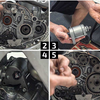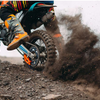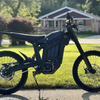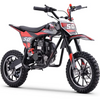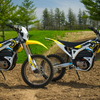How Much Does an Electric Dirt Bike Cost? Full Price Guide for Kids to Adults
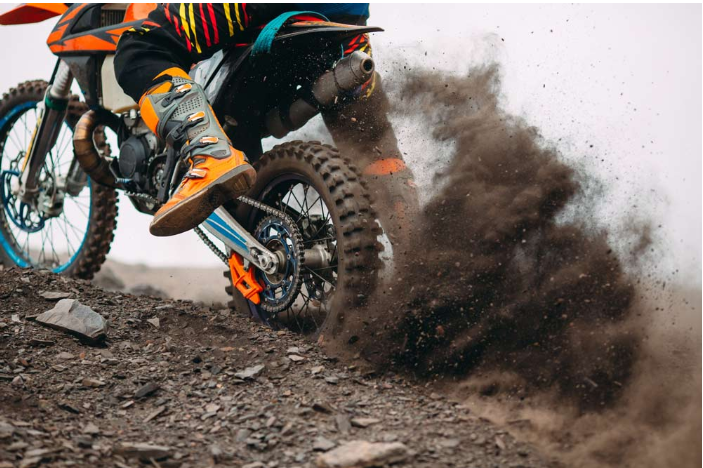
If you’re asking how much does an electric dirt bike cost, you’re really asking two questions: what’s the sticker price for different rider sizes and skill levels, and what’s the true cost to own once you factor in gear, batteries, chargers, and maintenance. The short answer is that prices range widely—from a few hundred dollars for kids’ 36V minis to five figures for premium, track-focused machines. The long answer is where the value is: what you actually get for each tier, how to avoid overpaying for specs you won’t use, and where it’s smart to spend a little more.
This guide breaks down pricing by rider type (kids, teens, adults) and by performance class (entry, mid, premium). You’ll see realistic speed and range expectations at each level, the hidden costs people forget (like protective gear and spare brake pads), and a buyer’s checklist so you can compare apples to apples across brands. We’ll keep the tone clear and practical, with one neutral, brand-light example for a kids’ bike so you can visualize seat height and spec style without feeling pushed. By the end, you’ll know exactly what budget lands the experience you want—and what you can safely skip.
Price Snapshot by Rider & Class

Kids / Youth (36V minis, 350–1000W): about $300–$900. These are small-frame, beginner-friendly bikes designed for backyard riding and mellow trails at 12–20 mph, depending on motor power and rider weight. Lead-acid variants cost less; lithium holds speed better late in the ride.
Teen / Lightweight Adult Trail (60V class): about $3,000–$6,500. This “play bike” tier balances torque, manageable weight, and strong value. Top speeds often land mid-40s mph with cruising ranges suitable for after-work loops and weekend singletrack.
Full-Size Off-Road (big-pack e-dirt): about $7,000–$12,000+. Heavier chassis, larger batteries, more stability at speed, and better hardware for long, open terrain.
Premium / MX-Oriented Electric: $10,000–$14,000+. Built for track performance with headline power and sophisticated mapping. Overkill for most new riders, but unmatched if you live at the track.
Street-Legal Dual-Sport/ADV Electric: $12,000–$25,000+. Not dirt bikes in the pure sense, but many riders cross-shop them for range and road access. Heavier, with much larger batteries.
Kids & Youth: Real Value Under $1,000
For smaller riders and first timers, the best value is the 36V mini. Expect a compact frame, low seat height, basic suspension, and front/rear disc brakes. Speed depends on rider weight and motor power:
- 350–500W: roughly 12–16 mph on flat ground for 60–100 lb riders.
- 1000W: roughly 18–20 mph for lighter riders; plan lower on grass or hills.
Battery chemistry matters. Sealed lead-acid (SLA) keeps the initial price low but sags in voltage as it discharges, so speed tapers earlier in the ride. Lithium variants cost more up front but feel stronger for longer and typically charge faster.
Who it’s for: parents who want safe, supervised sessions on private property or beginner OHV areas; smaller teens learning throttle control before moving up.
Representative, brand-light example to gauge sizing and layout: a 36V mini electric dirt bike with dual suspension and disc brakes (use as a single anchor for seat height and controls).
Teen & Lightweight Adults: The 60V Sweet Spot ($3,000–$6,500)
If you’re an adult asking how much does an electric dirt bike cost for real trail fun, this is the class to watch. The 60V “play bike” tier balances instant torque, manageable mass, and realistic range. Many models publish mid-40s mph top speeds and cruising ranges at steady pace that translate to roughly 1–2+ hours of mixed trail riding depending on terrain, rider weight, tire choice, and throttle habits.
What you get for the money
- Chassis & weight: sub-130 lb curb weight is common, which feels playful and much less intimidating than full-size enduro frames.
- Brakes: hydraulic discs (often 4-piston up front) with better modulation than kids’ bikes.
- Suspension: adjustable forks and shocks make a noticeable difference in confidence and comfort.
-
Ecosystem: plenty of parts and upgrades—gearing, rotors/pads, tires, throttles, higher-output chargers.
Who it’s for: riders who want after-work singletrack, weekend loops, and minimal wrenching. If you’re moving up from a 36V mini or from mountain bikes and you want a real off-road feel without huge weight, start here.
Full-Size Off-Road: Bigger Packs, Bigger Price ($7,000–$12,000+)
This tier trades lightweight flickability for stability and battery capacity. Speeds are still trail-appropriate, but the bike’s extra mass calms high-speed chop and feels planted in open desert or longer fire roads. You’ll pay for the larger pack, stronger chassis, and better dampers.
What you get for the money
- Longer steady-pace range thanks to bigger watt-hours.
- Sturdier hardware for sustained abuse and tall riders.
- Quieter than gas with less maintenance, yet closer to the “full motorcycle” feel.
Who it’s for: riders doing longer loops with fewer outlets; heavier or taller riders who want more chassis under them; anyone who prefers “calm at speed” over razor-sharp agility.
Premium / MX-Oriented Electric: The Top End ($10,000–$14,000+)
Premium MX platforms push headline power and advanced mapping in a full motocross chassis. They’re engineered to put down hot laps and withstand track punishment. Price reflects those parts and R&D.
What you get for the money
- Peak power and aggressive throttle maps you can tailor to conditions.
- High-end suspension and geometry tuned for jumps, rhythm sections, and braking bumps.
- Polish: better heat management, stronger wheels, refined ergonomics.
Who it’s for: experienced riders, track regulars, or anyone who values lap times over budget. If you mostly ride tight woods or short after-work sessions, the 60V tier is usually the smarter spend.
Hidden Costs Most Buyers Forget
- Protective gear: DOT full-face helmet, goggles, gloves, boots, knee/shin guards, and a jacket or jersey with armor. For kids, gear often equals 10–25% of the bike price and is non-negotiable.
- Spare consumables: brake pads, tubes or tubeless sealant, a spare chain and master link, and extra levers. Small items add up to comfort and uptime.
- Charger options: many adult bikes support higher-output chargers that cut wait times; these cost extra but double your seat time on big days.
- Tires: a hardpack tire set for faster days and a knobbier set for loam or mud can transform range and control.
- Transport & storage: hitch racks, wheel chocks, and a basic battery-safe storage routine (cool, clean, and dry).
Operating Costs vs Gas (Why “Price” Isn’t the Whole Story)

Electric dirt bikes eliminate oil changes, valve checks, fuel system drama, and most of the consumables that keep gas bikes in the garage. Your recurring costs are electricity (usually cents per ride at home), brake pads, tires, chains/sprockets, the occasional bearing or bushing, and battery health over the years. If you ride weekly, the time and money saved on routine maintenance are tangible. If you ride once a month, the difference is smaller, but the ease and quiet are still compelling.
How Battery Chemistry Changes What You Pay
Lead-acid (SLA) appears in budget kids’ minis. It is cheap but heavy, with more voltage sag as the battery drains and shorter cycle life. It’s fine for short, supervised sessions, especially if you keep it topped up and out of the cold.
Lithium-ion dominates teen/adult classes. It is lighter, holds voltage better under load, and tolerates partial charges. You’ll pay more up front, but the experience—stronger feel late in the ride and generally faster charging—often justifies it.
What You Actually “Buy” With Each Extra $500
-
+$500 over the cheapest kids’ bike: often gets you disc brakes at both ends, tighter assembly, and more reliable throttle and controller hardware.
-
+$500 over a basic 36V mini: can move you to lithium or a 1000W motor with simple parental speed controls.
-
+$500 inside the 60V tier: frequently buys better fork/shock internals or a stronger brake package, which you feel more than another 2 mph of top speed.
-
+$500 at the high end: tends to mean upgraded dampers, stronger wheels, or a better charger rather than raw speed.
Buying Scenarios (Match Budget to Use)
The backyard learner, age 7–12: spend $300–$700. You want a 36V mini with predictable power, a low seat, and real brakes. Runtime will be 20–40 minutes on lead-acid or longer on lithium. Supervise every ride.
The confident teen, small parks and smooth trails: spend $600–$900. A 36V 1000W mini adds torque and can reach high-teens mph for lighter riders. Look for adjustable speed modes.
The adult trail rider, after-work loops: spend $3,000–$5,000. A 60V lightweight trail platform hits the value sweet spot: instant torque, manageable weight, strong brakes, adjustable suspension, and an upgrade ecosystem.
The all-day explorer (off-road only): spend $7,000–$12,000+. A full-size e-dirt bike’s larger pack and calmer chassis shine on longer loops.
The track-focused rider: expect $10,000–$14,000+. Premium MX-oriented electric is about pace and durability, not budget.
How to Read a Price Tag Like a Pro
When comparing two bikes at the same price, judge the hardware you can feel: brakes, suspension, weight, and battery watt-hours. A lighter bike with better brakes and an honest range claim will be more fun than a heavier bike boasting an optimistic “max speed.” Also look at the seller’s parts shelf and warranty language. If you can’t easily buy pads, rotors, tubes, throttles, and chargers from the same place, assume downtime later.
Legal & Where You Can Ride (So You Don’t Waste Money)

Most electric dirt bikes—especially kids’ minis and 60V trail bikes—are sold off-road only. They are great for private property with permission, OHV parks, and motorized trails. They are not street-legal unless they’re factory road-legal or you complete a full conversion where your state allows it (lights, mirrors, horn, DOT tires, VIN/title, registration, insurance, and often a motorcycle endorsement). Plan your riding spots before you buy so you match the bike to your area’s access.
Simple Ownership Math: A First-Year Budget Template
- Bike: your chosen price tier (see above)
- Essential gear: $150–$600 per rider depending on age and quality
- Spares & tools: $60–$200 for pads, tubes or sealant, lube, and a basic torque wrench
- Charger upgrade (optional): $100–$300 if supported
- Transport/storage (optional): $50–$300 for a hitch carrier or garage setup
One Neutral Kids’ Example (link once, brand-light)
If you want a concrete size and control reference while shopping kids’ bikes, anchor the phrase 36V mini electric dirt bike to a representative youth listing once in your article. It helps parents visualize seat height, controls, and a sensible top speed for supervised riding.
Conclusion
There isn’t a single answer to how much does an electric dirt bike cost because “best” depends on rider size, terrain, and time in the saddle. For kids and brand-new riders, a $300–$900 36V mini keeps speeds sensible and confidence high. For most adults, the $3,000–$6,500 60V trail class is the value winner: light, lively, quiet, and supported by real parts and upgrades. Bigger packs and premium MX builds cost more, but they deliver range, stability, and track-level performance when that’s what you’re really buying.
To spend wisely, judge hardware you can feel—brakes, suspension, battery watt-hours, and weight—then check the seller’s parts shelf and warranty. Budget for protective gear and a few spares, and plan where you’ll ride so you don’t pay for capability you can’t use. If you’re outfitting a younger rider, start small, set clear expectations about runtime and speed, and keep sessions supervised. With those boxes ticked, your final price won’t just buy a bike; it’ll buy a season of quiet, low-maintenance rides that make every trail day feel easier.
Frequently Asked Questions
How much does an electric dirt bike cost for kids?
Most kids’ 36V minis run between $300 and $900 depending on motor power, battery chemistry, and components. Lead-acid versions are cheaper; lithium tends to hold speed better and charge faster.
How much does an electric dirt bike cost for adults?
The popular 60V trail class typically costs $3,000 to $6,500. Full-size off-road platforms are usually $7,000 to $12,000+, and premium MX-oriented electric can exceed $10,000.
Is it cheaper to run electric than gas?
For frequent riders, yes. Electricity at home is inexpensive and routine service is minimal compared with oil changes, valve checks, and fueling. You’ll still pay for pads, tires, chains, and occasional bearings.
Do I need to budget for a faster charger?
Not required, but useful. If your model supports higher-output charging, a faster charger shortens downtime on big ride days. Confirm compatibility and warranty notes before buying.
What’s the best budget move if I’m unsure?
If you’re new and shopping for yourself, target the 60V trail class for the best balance of power, weight, and price. If you’re buying for a child, start with a 36V mini and upgrade only when skills and confidence demand more power.
